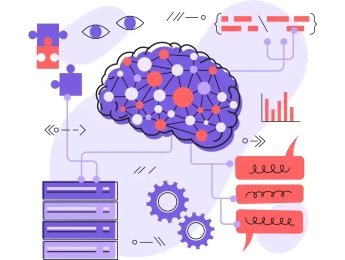Course Summary
Within the world of business, there is a constant drive to improve the inner functions, processes, and service they provide. Traditionally, this responsibility would solely rely on management and employees and would come with a moderate amount of uncertainty. However, with new technological advancements such as artificial intelligence, there are a plethora of ways of automating business development.
Artificial intelligence is a collection of technologies with the primary task of gathering, analysing, and presenting data. Using this data, the AI system can conduct a variety of assigned tasks. Business productivity can vastly improve with the help of AI, as it can automate time and resource consuming tasks, allowing management and employees to focus their efforts elsewhere.
While AI can positively impact a business, it is vital to understand the ethical implications associated with it. An overuse of AI can make a range of roles redundant within the business, and this could negatively influence reputation. It is also crucial to examine the attitudes to AI within the target market, as AI can cause a disconnect from the business and their customers.
During this course, you’ll learn:
- To understand how artificial intelligence can be used strategically within an organisation.
- To evaluate the concepts, principles, and structures of various technologies within artificial intelligence – machine learning, neural networks, and algorithms.
- To assess the benefits and limitations of artificial intelligence.
- To identify the social and ethical implications of artificial intelligence.
- To examine the history and current use and attitudes surrounding artificial intelligence and predict future developments.
- To successfully plan, organise and manage artificial intelligence application projects.
- To carefully identify and minimise the risks associated with artificial intelligence technologies.
This course is designed for anyone who wishes to incorporate artificial intelligence into a business to utilise its strategic advantages. It would be most beneficial for:
- Business Owners
- Business Analysts
- Chief Information Officers (CIOs)
- Chief Technology Officers (CTOs)
- Operations Managers
- Project Managers
- Artificial Intelligence Engineers
- Machine Learning Engineers
- Data Analysts
This course uses a variety of adult learning styles to aid full understanding and comprehension. Participants will review case studies of established businesses that have implemented artificial intelligence systems to highlight ways their productivity and knowledge has improved.
They will be provided all the necessary equipment needed to effectively be involved in the learning exercises. Participants will partake in a variety of presentations, video materials, demonstrations, and practical activities. The collection of learning methods will ensure that all participants will develop an in-depth understanding of the taught content.
Course Content & Outline
Section 1
- Introduction to Artificial Intelligence
- Defining artificial intelligence.
- How AI has been popularised in different industries.
- The evolution of AI technologies and their growing importance.
- Common types of AI systems and their ideal uses within organisations.
- Evaluating the benefits and limitations of AI.
- Identifying the purpose and functions of state space speech within AI.
Section 2
- Machine Learning
- Reviewing the three main types of machine learning – supervised, reinforced and unsupervised.
- Comparing the differences of the machine learning types and how these are best utilised.
- Understanding the purpose of classification, clustering, and regression.
- Using deep learning to imitate how the human brain gains knowledge.
- Analysing the hierarchy of algorithms within deep learning that accomplish predictive analysis.
Section 3
- Intelligent Agents
- The role intelligent agents play within Ai.
- Identifying the different types of intelligent agents – simple reflex, model-based, goal-based, utility-based and learning agents.
- Assessing how various agents can be incorporated into an AI system to carry out different tasks.
- Describing the 4 rules an intelligent agent adheres to.
- The fundamentals of an agent’s architecture, function, and program.
Section 4
- Social and Ethical Implications
- Evaluating the workplace attitudes towards AI.
- Using AI to reduce business resources by automating management tasks.
- Employee and customer resistance to AI.
- How increased AI use leads to increased unemployment rates.
- Balancing AI tasks with employee workload.
Section 5
- Strategic Uses for AI
- Gathering, analysing, and presenting data of customers and competitors.
- Automating time-consuming tasks to reduce employee responsibilities.
- Identifying patterns in market trends and predicting future trends to effectively prepare.
- Creating innovative ideas utilising AI data.
- Optimising costs and resources.













